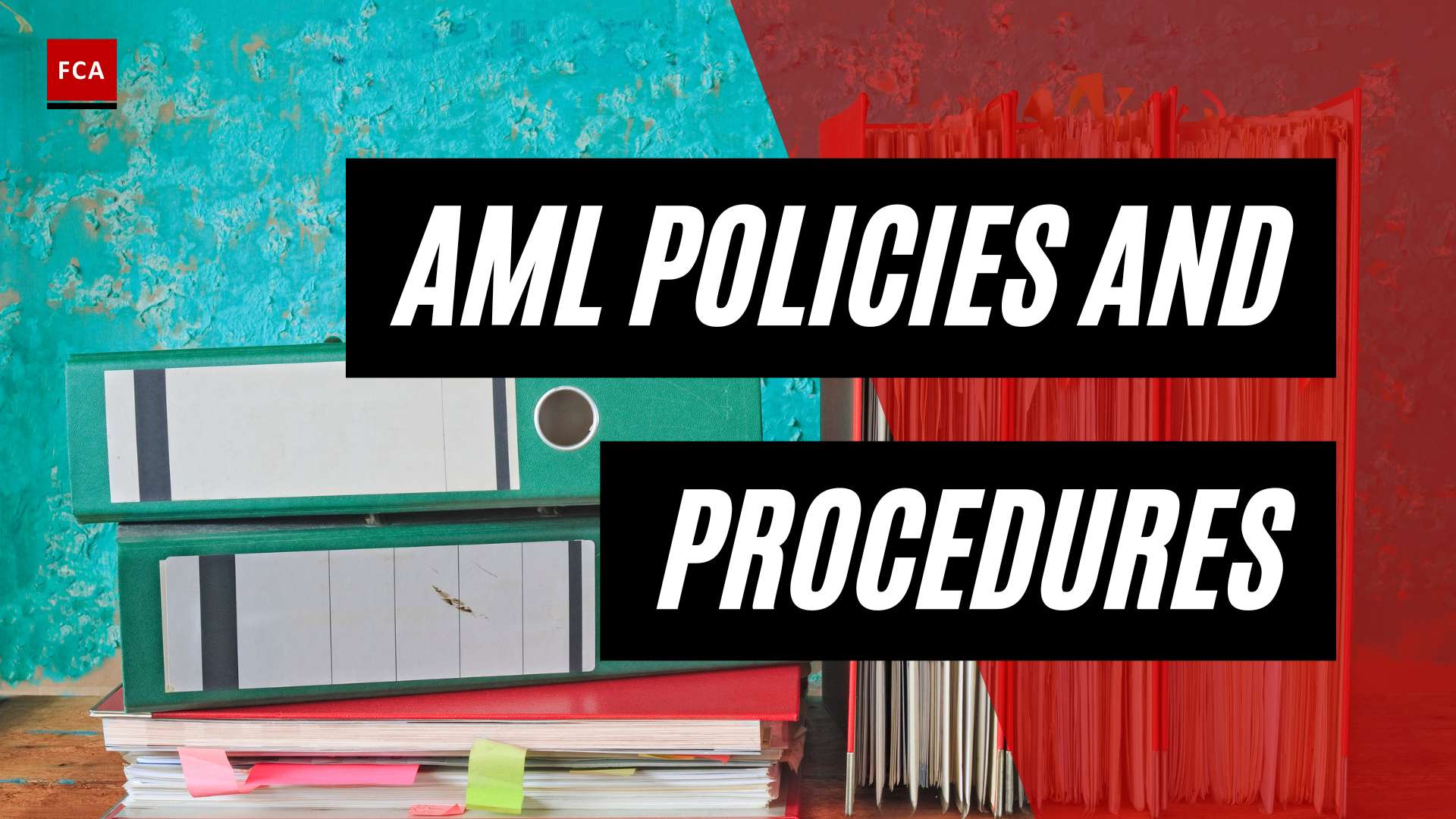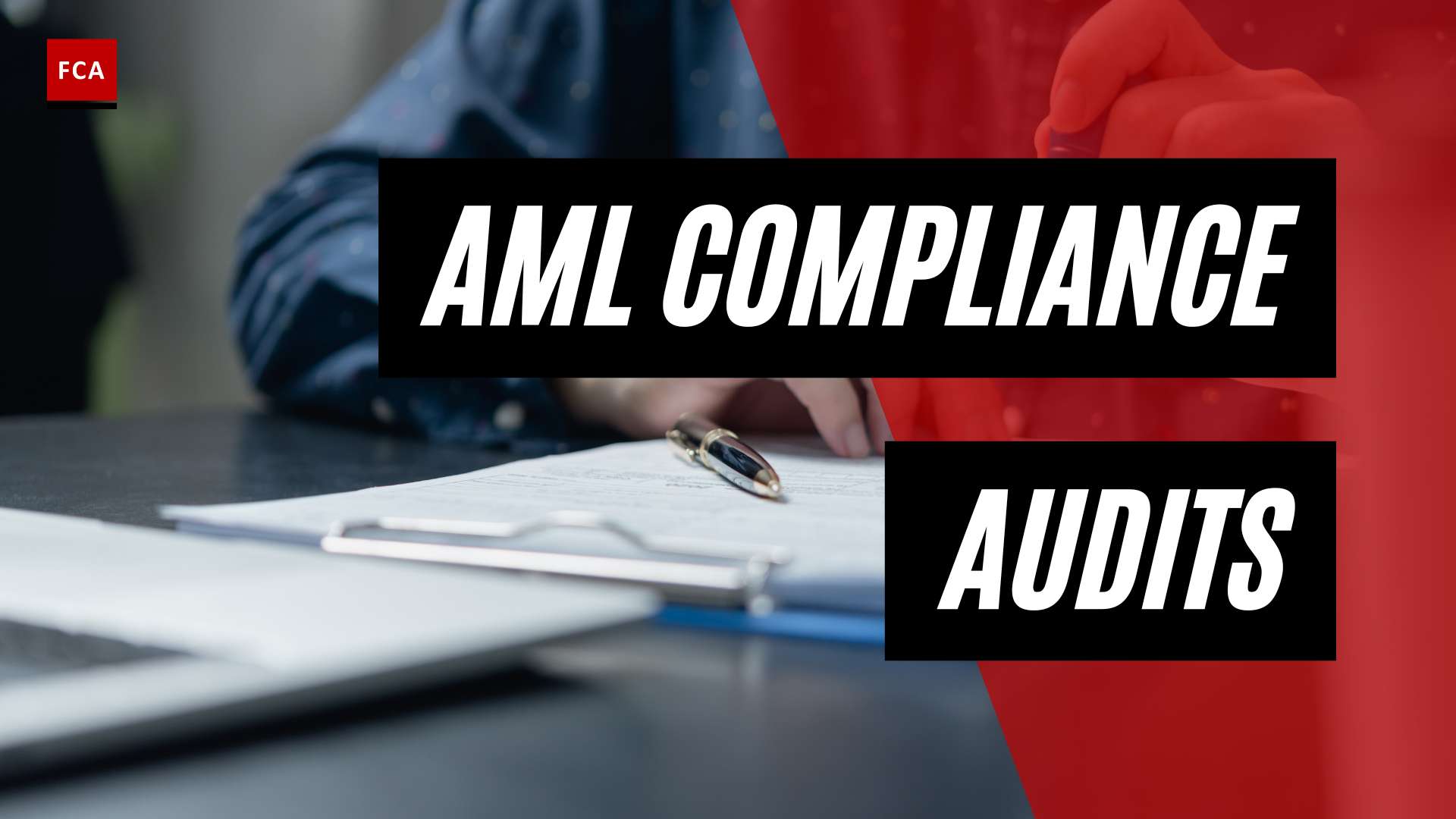Understanding Anti-Money Laundering (AML) Regulations
To combat financial crime, financial institutions are required to develop and implement effective Anti-Money Laundering (AML) compliance programs. These programs play a crucial role in safeguarding the integrity of the financial system and preventing money laundering and illicit activities. Understanding the importance of AML regulations and the key components of AML compliance programs is essential for professionals working in compliance, risk management, anti-money laundering, and anti-financial crime.
The Importance of AML Regulations
AML regulations are designed to detect and prevent money laundering, which involves disguising the origins of illegally obtained funds to make them appear legitimate. By implementing AML regulations, governments and regulatory bodies aim to protect the financial system from being exploited by criminals to launder money and finance illicit activities.
The consequences of money laundering are far-reaching. It can undermine the stability of financial institutions, distort the economy, and facilitate criminal activities such as fraud, corruption, drug trafficking, and terrorism financing. AML regulations help in breaking the cycle of money laundering, ensuring the transparency and integrity of financial transactions.
Key Components of AML Compliance Programs
An effective AML compliance program encompasses various components that work together to detect and deter money laundering activities. These components include:
-
Comprehensive Policies and Procedures: Financial institutions must establish and maintain clear policies and procedures that outline their obligations and processes for identifying and reporting suspicious activities. These policies should align with applicable laws and regulations and provide guidance to employees on AML compliance requirements.
-
Risk Assessments: Conducting regular AML risk assessments is crucial to identify and evaluate the money laundering risks specific to the institution’s operations. By understanding the risks, financial institutions can implement appropriate controls and allocate resources effectively.
-
Know Your Customer (KYC) Program and Customer Due Diligence (CDD): A strong KYC program is essential for verifying and understanding the identity of customers, their sources of funds, and the nature of their transactions. Robust customer due diligence measures enable financial institutions to identify and mitigate the risks associated with money laundering and other illicit activities.
-
Suspicious Activity Detection and Reporting: Financial institutions should have mechanisms in place to detect and report suspicious transactions or activities that may indicate money laundering. This involves implementing robust monitoring systems, establishing clear reporting channels, and training employees to identify red flags and report suspicious activity promptly.
-
Independent Audits and Testing: Regular AML compliance audits and independent testing ensure that the institution’s AML compliance program is functioning effectively and in line with regulatory requirements. These audits provide an objective assessment of the program’s strengths and weaknesses, helping identify areas for improvement.
-
Continuous Monitoring and Adaptability: AML compliance is an ongoing effort. Financial institutions should continuously monitor their compliance programs, adapt to evolving risks and regulatory changes, and update policies and procedures accordingly. Regular AML compliance training for employees is also essential to ensure awareness and understanding of AML obligations.
By implementing robust AML compliance programs and adhering to applicable regulations, financial institutions can contribute to the global fight against money laundering, maintain the integrity of the financial system, and protect themselves from legal and reputational risks associated with non-compliance.
International AML Laws and Regulations
Anti-Money Laundering (AML) regulations play a crucial role in combating financial crime and protecting the integrity of the global financial system. Various countries and international organizations have implemented AML laws and regulations to establish a comprehensive framework for detecting and deterring money laundering activities. In this section, we will explore AML regulations in the United States, AML directives in the European Union, and global efforts led by the Financial Action Task Force (FATF).
AML Regulations in the United States
The United States has a robust framework of AML regulations designed to combat money laundering and terrorist financing. Key legislation includes the Bank Secrecy Act (BSA), which was established in 1970 and has become one of the most important tools in the fight against money laundering. The BSA requires financial institutions to report certain transactions to the U.S. Treasury Department, helping to detect and prevent illicit financial activities (Finance Strategists).
In addition to the BSA, the USA PATRIOT Act, passed in 2001, significantly expanded AML regulations in the United States in response to the September 11 terrorist attacks. The act introduced measures to enhance customer identification procedures, strengthen information sharing between financial institutions and law enforcement agencies, and impose stricter penalties for money laundering activities (Finance Strategists).
AML Directives in the European Union
The European Union (EU) has implemented a series of AML directives to harmonize AML regulations across member states and enhance the EU’s ability to combat money laundering. These directives establish common standards for customer due diligence, record-keeping, and reporting suspicious activities. The most recent directive, the Fifth Anti-Money Laundering Directive (AMLD 5), introduced enhanced due diligence requirements, beneficial ownership registers, and measures to address the risks associated with virtual currencies (Finance Strategists).
The AML directives in the EU require member states to implement regulations into their national laws, ensuring consistency in AML efforts across the region. Financial institutions operating within the EU must comply with these directives and take necessary steps to prevent money laundering activities.
Global Efforts by the Financial Action Task Force (FATF)
The Financial Action Task Force (FATF) is an intergovernmental organization that sets global standards for combating money laundering and terrorist financing. Established in 1989, the FATF has become one of the most influential organizations in the field of AML legislation (Finance Strategists). The FATF develops recommendations that serve as the foundation for AML laws and regulations worldwide.
The FATF’s recommendations cover a wide range of areas, including customer due diligence, record-keeping, reporting of suspicious transactions, and international cooperation. Its goal is to promote effective implementation of AML measures and ensure a consistent global approach to combating money laundering.
To encourage compliance with its standards, the FATF conducts mutual evaluations of member countries’ AML regimes and publishes reports highlighting areas for improvement. By fostering international collaboration and engagement, the FATF plays a vital role in strengthening global efforts to combat money laundering and protect the integrity of the international financial system.
Understanding the international AML laws and regulations is essential for professionals working in compliance, risk management, anti-money laundering, and anti-financial crime. It enables them to navigate the complex landscape of AML requirements and contribute to the global fight against financial crime.
Implementing Effective AML Compliance Programs
To combat money laundering and ensure compliance with anti-money laundering (AML) regulations, financial institutions and businesses must establish robust AML compliance programs. These programs consist of various components that work together to detect and prevent illicit activities. The key components include designing comprehensive policies and procedures, conducting risk assessments, and implementing a Know Your Customer (KYC) program with Customer Due Diligence (CDD).
Designing Comprehensive Policies and Procedures
Comprehensive policies and procedures are the foundation of an effective AML compliance program. These documents outline the organization’s commitment to preventing money laundering and serve as a guide for employees to understand their responsibilities and obligations. Policies should cover various aspects, such as customer onboarding, transaction monitoring, record-keeping, and reporting suspicious activities.
By clearly defining procedures and expectations, organizations can ensure consistency and efficiency in their AML efforts. Regular updates and training on these policies are essential to keep up with evolving AML regulations and best practices. Implementing AML compliance software can also streamline the management and enforcement of these policies.
Conducting Risk Assessments
AML risk assessments play a crucial role in identifying and managing money laundering risks within an organization. By conducting these assessments, businesses can evaluate their susceptibility to money laundering activities and implement appropriate controls to mitigate those risks. Risk assessments should consider factors such as the nature of the business, customer profiles, geographic locations, and products or services offered.
The goal is to identify high-risk areas and allocate resources accordingly. This proactive approach enables organizations to focus their efforts on areas that pose the greatest risk, ensuring that preventive measures are targeted and effective. Regular reviews and updates of risk assessments are necessary to adapt to changing circumstances and emerging risks. Learn more about AML risk assessments.
Know Your Customer (KYC) Program and Customer Due Diligence (CDD)
The KYC program, along with Customer Due Diligence (CDD), is an integral part of AML compliance programs. KYC procedures involve verifying the identity of customers, assessing their risk profile, and understanding the nature of their business or transactions. CDD goes a step further by continuously monitoring customer activities to detect any suspicious behavior.
By implementing a robust KYC program, organizations can ensure that they are doing business with legitimate individuals and entities. This helps prevent the misuse of financial systems for money laundering purposes. KYC procedures typically involve collecting identification documents, conducting background checks, and assessing the source of funds.
Regularly updating customer information and performing ongoing monitoring are essential to identify any changes in risk profiles or suspicious activities. AML compliance training for employees involved in the KYC process is crucial to ensure that they understand the importance of compliance and are equipped with the necessary knowledge and skills. Learn more about AML compliance training and its significance in maintaining regulatory compliance.
By implementing comprehensive policies and procedures, conducting risk assessments, and implementing a robust KYC program with CDD, organizations can establish effective AML compliance programs. These programs not only help organizations meet their legal obligations but also protect the integrity of the financial system and promote transparency in financial transactions. Internal practices review, AML compliance audits, and continuous monitoring further strengthen the overall AML compliance efforts and ensure ongoing compliance with international AML regulations.
Reporting and Monitoring in AML Compliance
Effectively monitoring and reporting suspicious activities is a crucial aspect of Anti-Money Laundering (AML) compliance programs. Financial institutions must have robust systems in place to detect and report any potential money laundering activities. This section will explore three key components of reporting and monitoring in AML compliance: suspicious activity detection and reporting, independent audits and testing, and continuous monitoring and adaptability.
Suspicious Activity Detection and Reporting
One of the primary goals of AML compliance programs is to identify and report suspicious activities that may be indicative of money laundering, fraud, tax evasion, or terrorist financing. Financial institutions must develop internal processes and systems to detect and investigate such activities. These systems often rely on sophisticated technologies and analytics to identify patterns and anomalies in transactions.
Once suspicious activity is identified, it is crucial to promptly report it to the appropriate authorities. Reporting obligations vary across jurisdictions, and financial institutions must comply with the specific requirements of their respective regulatory bodies. Timely and accurate reporting is essential to assist law enforcement agencies in their efforts to combat financial crime.
Independent Audits and Testing
To ensure the effectiveness of AML compliance programs, financial institutions are advised to conduct independent audits and testing at regular intervals. These audits help assess the institution’s adherence to regulatory requirements, internal policies, and procedures. Independent auditors review the institution’s AML controls, processes, and systems to identify any gaps or weaknesses that may exist.
The frequency of audits and testing may vary depending on the institution’s risk profile and the regulatory environment in which it operates. Generally, audits should be conducted at least every 12-18 months, with more frequent audits for institutions operating in high-risk areas. The results of these audits should be reported directly to senior management and the Audit Committee for appropriate action.
Continuous Monitoring and Adaptability
AML compliance is an ongoing process that requires continuous monitoring and adaptability. Financial institutions should establish mechanisms to monitor internal practices, identify emerging risks, and review the effectiveness of their compliance programs. This includes regularly reviewing and updating policies and procedures to reflect changes in regulations and emerging money laundering techniques.
Continuous monitoring involves staying informed about emerging trends, technologies, and typologies related to money laundering. It also includes monitoring internal controls, employee adherence to policies, and the effectiveness of detection systems. By staying proactive and adaptive, financial institutions can respond effectively to evolving money laundering threats.
By implementing strong reporting and monitoring practices, financial institutions can contribute to the overall efforts in combating financial crime. These practices not only help in detecting and deterring money laundering but also demonstrate the institution’s commitment to maintaining the integrity of the financial system.
To learn more about AML compliance programs, their components, and the importance of reporting and monitoring, consider exploring resources on international AML regulations, global AML standards, AML reporting obligations, AML compliance audits, and other relevant topics.
Evolution of AML Legislation and Challenges Faced
As the global landscape of financial crimes continues to evolve, so does the legislation surrounding anti-money laundering (AML) efforts. Understanding the historical development of AML laws, the challenges posed by emerging technologies, and the coordination and effectiveness of AML enforcement is crucial for professionals working in compliance, risk management, and anti-financial crime.
Historical Development of AML Laws
The Bank Secrecy Act of 1970 (BSA) in the United States marked a significant milestone in the fight against money laundering. It required financial institutions to report certain transactions to the U.S. Treasury Department, aiming to detect and deter illicit financial activities. Since then, numerous laws have been enacted to enhance and amend the BSA, providing law enforcement and regulatory agencies with effective tools to combat money laundering (Finance Strategists; FinCEN).
On an international level, the Financial Action Task Force (FATF) was established in 1989 as a global standard-setting body for AML and counter-terrorist financing (CTF) efforts. The FATF’s recommendations and guidelines have become instrumental in shaping AML legislation and practices worldwide. Its influence has extended beyond its member countries, making it one of the most influential organizations in the field of AML legislation (Finance Strategists).
Emerging Technologies and AML Challenges
The advancement of technology has presented new challenges for AML professionals. Criminals are increasingly utilizing new technologies, such as cryptocurrencies, digital payment methods, and online platforms, to evade law enforcement and facilitate money laundering. These technologies offer anonymity, global reach, and speed, making it more difficult to trace and prevent illicit financial activities (Sanction Scanner).
AML officers must stay abreast of emerging trends and continuously adapt their strategies to mitigate these challenges. This includes leveraging advanced analytics, machine learning, and artificial intelligence to detect patterns, anomalies, and suspicious activities in large volumes of financial data. Additionally, collaboration between public and private sectors, as well as international cooperation, is crucial for effectively combating money laundering in the digital age.
Coordination and Effectiveness of AML Enforcement
AML legislation is only as effective as its enforcement. Coordination between regulatory authorities, law enforcement agencies, and financial institutions is vital for combating money laundering on a global scale. Sharing information, intelligence, and best practices helps enhance the effectiveness of AML efforts.
Moreover, regulatory bodies and supervisors play a key role in ensuring compliance with AML regulations. Conducting regular audits, inspections, and investigations helps identify lapses in AML compliance and addresses any vulnerabilities in the financial system. AML compliance audits provide an opportunity to assess the effectiveness of internal controls, risk management practices, and adherence to regulatory requirements (AML compliance audits).
By continuously evolving AML legislation, addressing emerging challenges, and fostering coordination and effectiveness in enforcement, the global community can strive towards a more robust and resilient financial system that safeguards against money laundering and other financial crimes.
Impacts of Non-Compliance and Importance of AML Compliance
Ensuring compliance with anti-money laundering (AML) regulations is of paramount importance for businesses and financial institutions. Non-compliance can have severe consequences and pose risks to the integrity of the financial system. Let’s explore the impacts of non-compliance and the significance of AML compliance.
Consequences of Non-Compliance
Non-compliance with AML regulations can lead to a range of serious consequences for both organizations and their officers. These consequences may include:
-
Heavy fines and penalties: Regulatory bodies have the authority to impose significant fines and penalties on entities that fail to comply with AML regulations. These fines can be substantial and have a detrimental impact on an organization’s financial standing.
-
Sanctions and criminal charges: Non-compliance may result in the imposition of sanctions by regulatory authorities, restricting an organization’s ability to conduct certain business activities. In more severe cases, criminal charges may be filed against individuals involved in money laundering or other illicit financial activities.
-
Reputational damage: Non-compliance can severely damage an organization’s reputation, leading to a loss of trust among stakeholders, customers, and employees. Rebuilding trust and repairing reputational damage can be a challenging and time-consuming process.
-
Increased regulatory scrutiny: Organizations that demonstrate a lack of compliance may face heightened regulatory scrutiny. Regulatory authorities may subject these organizations to more frequent inspections, audits, and investigations to ensure future compliance.
Maintaining compliance with AML regulations is essential to avoid these consequences and protect the interests of businesses, financial institutions, and their stakeholders.
Maintaining Financial System Integrity
One of the primary reasons for implementing and adhering to AML regulations is to maintain the integrity of the financial system. A strong and effective AML policy acts as a deterrent against criminal activities such as money laundering, terrorism financing, and other financial frauds that can destabilize economies and impact societal well-being.
AML regulations promote transparency and accountability in financial transactions, creating an environment of trust among businesses, financial institutions, and their customers. By preventing the infusion of illicit funds into the economy, AML measures help safeguard the integrity of financial systems worldwide.
International Collaboration and Engagement
The importance of AML compliance extends beyond national borders. International collaboration and engagement play a crucial role in combating money laundering and financial crime on a global scale. The Financial Action Task Force (FATF), an intergovernmental organization, sets global standards and promotes the effective implementation of AML regulations.
International financial institutions, such as the International Monetary Fund (IMF), consider effective AML policies and measures crucial for maintaining international financial system integrity and protecting member countries’ economies. The IMF actively contributes to shaping global AML policies, providing policy advice on AML matters during consultations, assessments, and capacity-building initiatives.
Collaboration and engagement among countries, regulatory bodies, and financial institutions are vital in identifying and addressing emerging money laundering threats. By working together, stakeholders can enhance the effectiveness of AML measures, share information, and develop strategies to combat financial crime more effectively.
Maintaining AML compliance is not only a legal obligation but also a fundamental responsibility for organizations and financial institutions. By adhering to AML regulations, businesses can contribute to a secure financial system, promote transparency, and safeguard their own reputation and interests.








